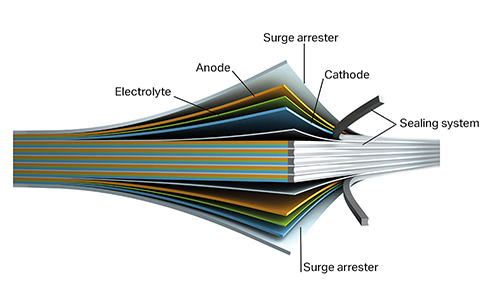Imagine a battery that reduces the overall number of structural parts in an electrical vehicle and the volume taken up by the battery. That’s the concept behind EMBATT (chassis embedded battery), which functions as structural energy storage. It can cut the volume occupied by a battery in half, with serendipitous outcomes for lightness and structural efficiency. This is similar to NASA-backed research on cubesat walls that also function as energy storage structures. IAV is a German firm that provides consultation and partnerships with leading automotive companies. It specializes in synergistic concepts and system-level thinking. The company, working with Fraunhofer Institute for Ceramic Technologies and Systems IKTS in Dresden, and Thyssen Krupp System Engineering ,“Want[s] to use our experience from automotive development for renewable energies and decentralized energy supply.” It sees strong links between these endeavors, and works to combine technologies that will enable greater efficiency. Think of a Tesla battery pack, composed of individual cells connected in series and parallel …
A Smart Battery Management System and Multiple Sensors
Fraunhofer and the Hochschule Esslingen University of Applied Sciences have created an electronic race car that they will show at the Sensor + Test Measurement Fair in Nuremberg, Germany from May 14 through 16. Not only electrically driven, the innovative vehicle holds a number of sensor and control systems that might be of interest to electric aircraft designers. EVE, the product of the school and Fraunhofer’s labors, can sprint from 0 to 100 kilometers an hour (62 mph) in 3.6 seconds with its twin 60 kilowatt, 4,500 rpm motors, and reach a top speed of 140 km/hr (86.8 mph). Its 8 kilowatt-hour lithium polymer batteries allow only a short run of 22 kilometers (13.64 miles) though, not surprising in terms of high power outputs pulling the cells down quickly. Electrical engineering students from the e-racing team at the Hochschule designed the 300 kilogram (660 pound) car as an elective project to augment their studies, and ran it at the International Formula …

